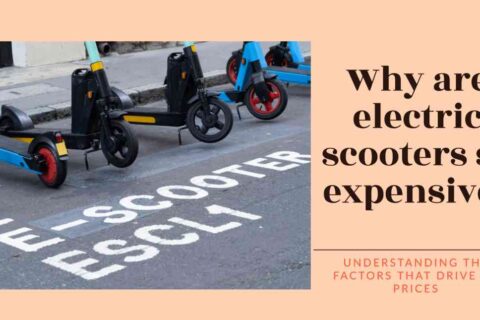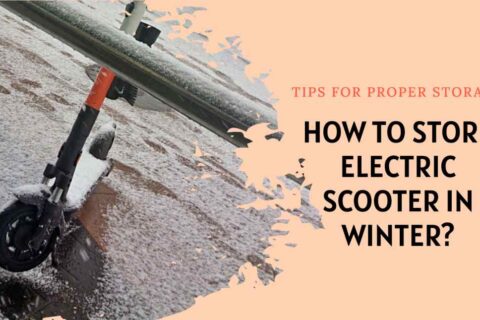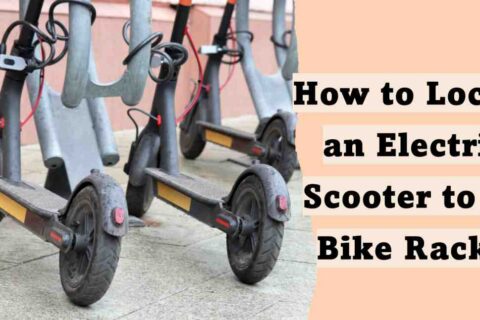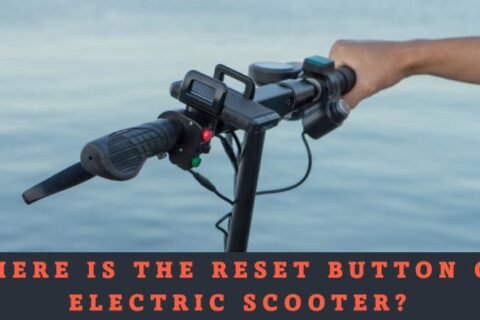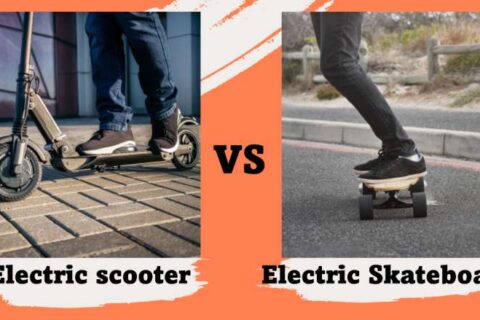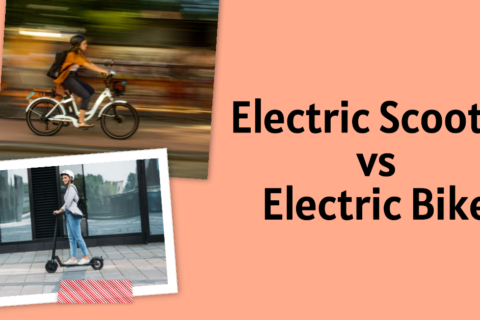All of us are eager to ride an electric scooter, but after purchasing one, we often come to realize how to waterproof electric scooter, don’t we? And that’s where you find yourself now, in the right place to learn how to effectively waterproof your electric scooter.
It’s a common realization that protecting your scooter from water damage is essential, and this article will provide you with valuable information on how to do it right.
As you embark on the journey of waterproofing your electric scooter, keep in mind that every scooter is unique, and the specific techniques required may vary. It’s essential to assess your scooter’s design and identify areas that are most susceptible to electric scooter water damage.
Key Takeaways:
- Waterproofing electric scooter protects from water damage, corrosion, and electrical issues.
- Identify vulnerable areas and apply appropriate waterproofing measures.
- Regularly inspect and maintain waterproofing for optimal effectiveness.
- Consider a high IP-rated waterproof scooter for added durability.
- Practice proper cleaning, maintenance, and storage.
- Conduct routine inspections to address potential issues.
- Enjoy safe rides on your waterproof electric scooter in various weather conditions

Table of Contents
ToggleUnderstanding Water Resistance and Waterproofing
Water resistance refers to the ability of a device or material to withstand exposure to water to some degree. A water-resistant electric scooter can handle light rain or splashes without immediate damage. However, it may not be able to withstand prolonged exposure to heavy rain or submersion in water.
On the other hand, a waterproof electric scooter offers a higher level of protection against water. It is designed to prevent water from entering sensitive components, allowing you to ride confidently even in heavy rain or wet conditions.
Waterproof scooters undergo rigorous testing and adhere to specific standards to ensure their ability to withstand water ingress.
Guide on How to Waterproof Electric Scooter?
Reading the Manufacturer’s Guidelines
When it comes to waterproofing your electric scooter, it’s crucial to pay attention to the manufacturer’s guidelines. Each scooter is unique, with different components and materials that require specific protection against water damage.
By carefully reading the guidelines, you’ll gain valuable insights into how to use your scooter in wet conditions and understand its waterproofing capabilities.
Caution:
Manufacturers often have specific requirements for warranty claims, and failing to adhere to these guidelines could void your warranty.
Identifying Vulnerable Areas on Your Scooter
A. Conducting a thorough inspection
Take the time to carefully examine your electric scooter, paying close attention to its various components and exposed parts. Look for any signs of wear, tear, or potential entry points for water.
Check the seams, joints, and areas where different parts meet. Remember, water can find its way into the tiniest of gaps, so a meticulous inspection is essential.
B. Common areas prone to water damage
Certain areas on electric scooters are more susceptible to water damage than others. These include the battery compartment, control panel, charging port, motor casing, and connectors between different electrical components.
C. Taking note of exposed wires, connectors, and openings
Exposed wires, connectors, and openings are potential entry points for water, making them critical areas to focus on during waterproofing.
Inspect these components carefully, looking for any signs of corrosion or damage. If you notice any exposed or frayed wires, they should be addressed promptly to prevent further damage.
Permanent Waterproof solutions
Let’s check out the permanent solutions for how to waterproof electric scooters:
I. Applying a Silicone Sealant
Guide for Applying Silicone Sealant
- Using a small brush or applicator: Choose a small brush or applicator to apply the silicone sealant. This allows for better control and precision during the application process.
- Applying the sealant to vulnerable areas: Carefully apply the silicone sealant to the areas that are prone to water damage. This may include the battery compartment, control panel, charging port, and any other exposed components. Ensure thorough coverage, paying attention to any gaps, joints, or openings where water could potentially penetrate.
Benefits of silicone sealant for waterproofing
Using silicone sealant for waterproofing your electric scooter offers several benefits:
- Waterproof barrier: The silicone sealant forms a protective layer that prevents water from entering vulnerable areas. It acts as a barrier against moisture, safeguarding your scooter’s sensitive components.
- Flexible and durable: Silicone sealants are known for their flexibility, which allows them to withstand vibrations and movements without cracking or peeling. They provide long-lasting protection against water ingress, ensuring the durability of your scooter.
- Easy application and versatility: Applying silicone sealant is relatively simple and can be done by most scooter owners. It adheres well to various materials, including plastic, metal, and rubber, making it suitable for different parts of your scooter.

II. Applying a Silicone-Based Coating
Guide for Applying Conformal Coating
- Applying the coating to sensitive electronic components: Use a small brush or an applicator specifically designed for conformal coatings. Apply a thin and even layer of the coating to the exposed electronic components, such as the circuit board, connectors, and any other areas susceptible to water damage.
- Allowing the coating to dry and cure properly: After applying the conformal coating, it’s crucial to allow it sufficient time to dry and cure. Proper curing ensures that the coating forms a reliable barrier against moisture and provides long-term protection.
Aftercare and Maintenance of the Coating
To ensure ongoing protection, it’s important to incorporate regular aftercare and maintenance of the conformal coating on your electric scooter.
- Regularly inspecting the coating for wear or damage: Periodically inspect the coating for any signs of wear, damage, or areas where it may have worn thin. Look for any cracks, bubbles, or discoloration that could indicate compromised protection. If you notice any issues, consider reapplying the conformal coating to maintain its effectiveness.
- Reapplying the coating as needed for ongoing protection: Over time, the conformal coating may wear off or become less effective. If you notice any areas where the coating has deteriorated, consider reapplying it to ensure continued protection against water damage.

III. Using Dielectric Grease on Connectors
Applying a thin layer to electrical connectors
- Clean the connectors: Before applying the grease, ensure that the connectors are clean and free from any dirt, debris, or existing oil. Use a contact cleaner or isopropyl alcohol and a lint-free cloth to gently clean the connectors.
- Apply a thin layer: Using a clean applicator or a small brush, apply a thin layer of dielectric grease to the metal surfaces of the connectors. Be careful not to apply excessive amounts of grease, as it may attract dirt or cause connections to become loose.
Benefits of dielectric grease for preventing moisture damage
- Moisture prevention:
One of the critical advantages of dielectric grease is its ability to repel moisture. By applying a thin layer of grease to the connectors, you create a barrier that helps to keep water out, reducing the risk of short circuits and other electrical issues caused by moisture infiltration. - Corrosion protection:
Moisture can lead to corrosion on metal connectors, compromising their performance and conductivity. Dielectric grease acts as a protective shield, inhibiting corrosion and maintaining the integrity of the connectors over time. This helps to ensure smooth electrical flow and prevent potential malfunctions. - Enhanced electrical connection:
Dielectric grease also improves the electrical connection between connectors. By reducing resistance and minimizing oxidation, the grease facilitates better conductivity, which can result in improved performance and reliability of your electric scooter.

IV. Utilizing O-rings Around Non-Sealed Screw Holes
O-rings are versatile and practical tools for waterproofing non-sealed screw holes on your electric scooter. They are typically made of durable materials like rubber or silicone and are designed to fit snugly around the screw holes, forming a tight seal that keeps water out.
Placing O-rings around vulnerable screw holes and openings
- Identify vulnerable screw holes and openings: Conduct a careful inspection of your scooter to identify areas where screw holes and openings are not adequately sealed. These areas are particularly prone to water ingress and need additional protection.
- Choose the right O-ring size and material: Select O-rings that are the appropriate size and material for the specific screw holes or openings you want to seal. Ensure that the O-rings are compatible with the surrounding materials and offer a good balance of elasticity and durability.
- Carefully place the O-rings: Gently position the O-rings around the screw holes or openings, ensuring a tight and secure fit. The O-rings should create a watertight seal, preventing water from seeping in during rides or when exposed to wet conditions.

V. Sealing Small Holes with Waterproof Plugs or Caps
Inserting Waterproof Plugs or Grommets
When it comes to sealing small holes on your electric scooter, waterproof plugs or grommets are excellent choices. They come in various sizes and materials, allowing you to select the most suitable ones for your specific needs.
- Choosing the right size and material for the plugs or grommets: Before proceeding with the sealing process, identify the small holes that require attention. Measure the hole’s diameter accurately and select plugs or grommets that match the size. Additionally, consider the material of the plugs or grommets—typically rubber or silicone—for optimal durability and water resistance.
- Inserting them into openings or holes for sealing: With the plugs or grommets in hand, gently insert them into the corresponding small holes or openings on your electric scooter. Ensure a snug fit, as this will create a watertight seal and prevent any moisture from penetrating.
Using Rubber or Silicone Caps
Another effective method for sealing small openings on your electric scooter is by using rubber or silicone caps. These caps can easily cover and protect vulnerable areas, preventing water ingress and potential damage.
- Covering small openings with caps to prevent water ingress: Identify the small openings that require sealing, such as exposed ports or connectors. Select the appropriate size and type of rubber or silicone caps that fit securely over these openings. The caps should provide a tight and secure seal to prevent water from entering.
- Ensuring a secure and watertight fit: Place the caps over the small openings and press them firmly to ensure a secure fit. Verify that there are no gaps or loose areas where water could seep through. The caps should effectively block water from entering the openings and safeguard your scooter’s sensitive components.

VI. Waterproofing the Motor Wheel Axles
These components play a crucial role in the scooter’s performance and can be susceptible to water damage if not adequately protected.
Before applying waterproofing measures to the motor wheel axles, it’s important to prepare them properly. Begin by thoroughly cleaning the axles to remove any dirt, debris, or old lubricants. A soft cloth and a mild cleaning solution should suffice for this task. Make sure to dry the axles thoroughly to prevent moisture from being trapped during the waterproofing process.
One effective way to enhance the water resistance of the motor wheel axles is by greasing them. Choose a high-quality, waterproof grease suitable for the specific requirements of electric scooter axles. Apply a thin and even layer of grease to the axles, ensuring that all surfaces are adequately covered. The grease will create a protective barrier against water intrusion, reducing the risk of corrosion and other potential damage.
Temporary and Quick Waterproofing Measures
Using Adhesive Patches for Quick Fixes
Adhesive patches are a handy resource for addressing small punctures or tears that may compromise your scooter’s waterproofing. These patches provide a temporary barrier against water ingress and can be applied easily when you’re on the go.
Employing Duct Tape as a Temporary Solution
Duct tape, often regarded as a versatile tool, can also serve as a temporary waterproofing solution for your electric scooter. In emergencies, where immediate protection is required, duct tape can help seal off vulnerable areas and prevent water from infiltrating sensitive components.
Protecting the Ride Deck and Battery Charging Port during Rides
During rides, it’s essential to shield your electric scooter’s ride deck and battery charging port from water exposure. This precautionary measure can help minimize the risk of damage caused by splashes or rainfall. Consider using waterproof covers or custom-made protective accessories for your scooter model.
Important Tips:
While temporary waterproofing provides a quick solution, it’s important to note that they are not long-term fixes.
Recommended Waterproofing Products for Electric Scooters
Waterproof sprays and coatings offer a convenient and effective way to add an extra layer of protection to your scooter. Here are some recommended options to consider:
- Silicone-based waterproof sprays:
Silicone-based sprays create a water-repellent barrier on your scooter’s surfaces. They are easy to apply and provide long-lasting protection against water damage. Make sure to choose a spray that is specifically formulated for use on electric scooters. - Nano-coatings:
Nano-coatings use nanotechnology to create an ultra-thin protective layer on your scooter’s surfaces. These coatings are highly effective in repelling water, dirt, and other contaminants. They offer excellent durability and can provide long-term protection. - Corrosion-resistant coatings:
Look for coatings that are designed to prevent corrosion on metal surfaces. These coatings form a protective barrier that inhibits the formation of rust, extending the lifespan of your scooter’s components.

Importance of Selecting a Waterproof Electric Scooter
When choosing an electric scooter, prioritizing waterproof features is essential, especially if you anticipate riding in wet conditions. A waterproof scooter provides added durability, reliability, and peace of mind, knowing that your scooter can handle various weather scenarios.
Investing in a waterproof electric scooter also reduces the risk of water damage to sensitive electrical components, ensuring a longer lifespan and optimal performance.
Additionally, it eliminates the need for frequent waterproofing maintenance, saving you time, effort, and money in the long run.
Understanding IP (Ingress Protection) Ratings
One way to determine the level of protection provided by various electrical enclosures and components is by referring to IP (Ingress Protection) ratings. IP ratings are internationally recognized standards that indicate the degree of protection against solid objects and liquids.
These ratings consist of two digits, the first indicates the protection against solids, and the second represents the protection against liquids.
First Number – Protection against Solid Objects: The first number in the IP rating indicates the degree of protection against solid objects such as dust, dirt, and debris. It ranges from 0 to 6, with higher numbers indicating increased protection. For example:
- IP0X: No special protection against solid objects.
- IP5X: Partial protection against dust and other small solid particles.
- IP6X: Complete protection against dust and other solid particles.
Second Number – Protection against Liquids: The second number in the IP rating denotes the level of protection against liquids, including water. It ranges from 0 to 9, with higher numbers indicating better liquid resistance. For example:
- IPX0: No special protection against liquids.
- IPX4: Protection against water splashes from any direction.
- IPX7: Protection against temporary immersion in water up to a certain depth.
Source: IP Rating Chart
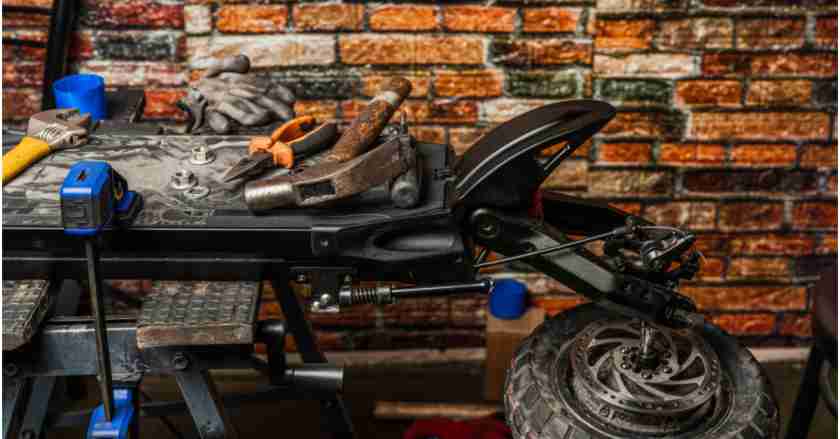
Cleaning, Maintenance, and Storage Tips
By following these tips, you can keep your scooter in excellent condition and minimize the risks associated with exposure to moisture.
A. Using a Waterproof Cover for Storage
When storing your electric scooter, it’s crucial to shield it from the elements. Invest in a high-quality waterproof cover designed specifically for scooters.
This cover will provide an extra layer of protection against rain, snow, and other environmental factors that can potentially damage your scooter. Ensure that the cover fits securely and covers the entire scooter, including the handlebars, deck, and wheels.
B. Use a Waterproof Bag or Pouch to carry the scooter
If you frequently transport your electric scooter, consider using a waterproof bag or pouch. These accessories provide an additional safeguard during rainy commutes or when traveling through wet environments.
Look for a bag or pouch with adequate padding to protect your scooter from scratches and impact. It’s also beneficial if the bag has multiple compartments to store your charger, accessories, and personal belongings.
C. Drying the Scooter After Riding in the Rain
After riding your electric scooter in heavy rain or wet conditions, it’s crucial to dry it thoroughly to prevent moisture buildup.
Use a soft, absorbent cloth or towel to wipe down the scooter’s frame, deck, handlebars, and any other exposed areas.
Pay special attention to the connectors, joints, and crevices where water may accumulate. By removing excess moisture promptly, you minimize the risk of corrosion and damage to the electrical components.
D. Cleaning with a Wet-Dry Vacuum Cleaner
Regular cleaning is crucial to keep your electric scooter in top shape. To remove dirt, debris, and moisture effectively, consider using a wet-dry vacuum cleaner.
These versatile tools allow you to suction away water and particles from various surfaces without causing damage. Be sure to use the appropriate attachments and take extra care around sensitive components and connectors.
E. Correctly Folding the Scooter for Storage
If your electric scooter is foldable, it’s important to follow the manufacturer’s instructions for folding and unfolding it correctly.
Ensure that all latches are securely fastened when storing or transporting the folded scooter. This way, you maintain the scooter’s structural integrity and reduce the risk of water seeping into vulnerable areas.
F. Using Low-Pressure Water Jets for Cleaning
While it’s generally advisable to avoid using high-pressure water jets on electric scooters, a gentle stream of low-pressure water can be helpful for thorough cleaning.
Use a garden hose with a spray attachment or a low-pressure water source to rinse off dirt and grime. Be cautious not to direct the water stream directly at electrical components, connectors, or the battery.
Instead, focus on the scooter’s frame and wheels. Afterward, dry the scooter completely using a cloth or towel.

Factors to Consider for Protecting Your Scooter
While understanding the precipitation levels is important, there are additional factors to consider when protecting your electric scooter from wet conditions. Here are a few key considerations:
- Frequency of wet rides: Determine how often you plan to ride your scooter in wet conditions. If you frequently commute or ride in rainy weather, investing in more comprehensive waterproofing measures becomes even more crucial.
- Terrain and riding surfaces: Evaluate the types of surfaces you’ll encounter during your rides. Are you primarily riding on paved roads, gravel paths, or off-road trails? Different surfaces can affect the amount of water and mud splashes your scooter will encounter, influencing the necessary protective measures.
- Storage and parking arrangements: Assess where you’ll store your scooter when not in use. If you have a designated covered parking space or a secure garage, your scooter may be better protected from direct exposure to rain and other elements. If you lack a covered area, you must prioritize waterproofing even more.
Regular Inspection and Maintenance
Look for any cracks, corrosion, loose connections, or frayed wires. If you notice any abnormalities, it’s best to address them promptly to prevent water infiltration and potential electrical hazards.
During your inspections, keep an eye out for the following indicators that may require attention:
- Cracked or Damaged Components: Check the scooter’s frame, fenders, and other structural parts for cracks or signs of damage. Cracks can compromise the scooter’s structural integrity and make it more susceptible to water damage.
- Corrosion and Rust: Look for signs of corrosion on metal components, such as the handlebars, brake levers, or bolts. Corrosion can weaken the scooter’s components and compromise their functionality. If you notice any signs of rust or corrosion, clean the affected area carefully.
- Loose or Damaged Wiring: Examine the wiring connections and harnesses for any loose or frayed wires. Loose or exposed wires can be vulnerable to water damage and electrical issues.
In addition to inspections, consider the following maintenance tasks to keep your scooter in optimal condition:
- Tire Maintenance: Regularly inspect the tires for signs of wear, damage, or inadequate inflation. Ensure that the tires are properly inflated according to the manufacturer’s recommendations.
- Brake System: Check the brake pads, cables, and calipers for wear and proper functionality. Well-maintained brakes are crucial for your safety and enable effective stopping power, particularly in wet or slippery conditions.
- Battery Maintenance: Follow the manufacturer’s guidelines for battery maintenance, including charging and storage recommendations. Inspect the battery terminals for any signs of corrosion and clean them if necessary.
Frequently Asked Questions (FAQ)
Why is it important to waterproof an electric scooter?
Waterproofing an electric scooter is crucial because it helps protect sensitive electrical components from water damage. Exposure to moisture can lead to malfunctions, short circuits, and corrosion.
Can I ride my electric scooter in the rain if it’s not waterproofed?
It’s generally not recommended to ride an electric scooter in heavy rain or wet conditions if it’s not specifically designed and certified as water-resistant or waterproof.
Can I waterproof my electric scooter myself, or do I need professional assistance?
Yes, waterproofing an electric scooter can be done by you with some technical knowledge and DIY skills.
Many of the waterproofing techniques, such as applying silicone sealant or using waterproof plugs, can be done at home.
How often should I perform maintenance checks on my waterproofed electric scooter?
It is recommended to conduct routine inspections every few months or after riding in particularly wet or harsh conditions.
Are there any limitations to waterproofing an electric scooter?
While waterproofing measures can significantly enhance the scooter’s resistance to water. It’s essential to follow the manufacturer’s guidelines, regularly inspect your scooter, and avoid prolonged exposure to excessive moisture.
Can I still charge my electric scooter in wet conditions after waterproofing it?
If the charging port or any electrical components show signs of water ingress, it’s best to wait until they are completely dry before attempting to charge the scooter.
Will waterproofing my electric scooter void the warranty?
Most manufacturers may consider certain DIY waterproofing methods as modifications that could potentially void the warranty.
To be on the safe side, consult the manufacturer or seek professional advice regarding waterproofing.
Can I use my electric scooter in all weather conditions after waterproofing?
Waterproofing your electric scooter enhances its ability to withstand wet conditions, but it doesn’t mean it’s entirely impervious to all weather conditions.
It’s important to use your judgment and consider factors such as heavy rain, strong winds, or extreme temperatures when deciding whether to ride your scooter.
Conclusion
In conclusion, by prioritizing waterproofing for your electric scooter, you can enjoy worry-free rides, regardless of weather conditions or unexpected encounters with water. Remember, a waterproof scooter is not only more durable and reliable but also provides a safer riding experience.
So, to know how to waterproof electric scooter apply the tips and techniques shared in this guide, select the appropriate waterproofing products, and take the necessary steps to maintain the waterproofing of your electric scooter. Embrace with confidence, knowing that your electric scooter is ready for any adventure that lies ahead.



